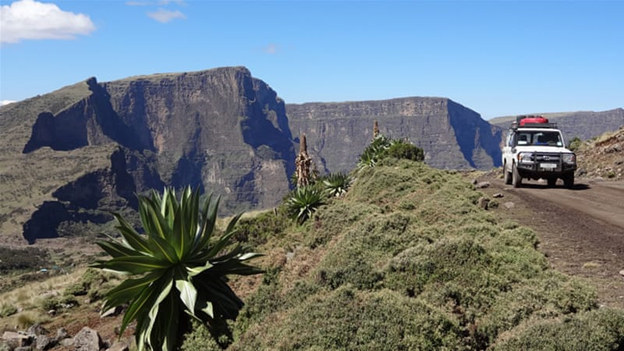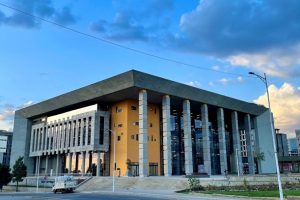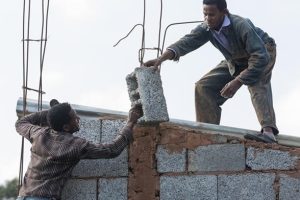
Considering the potential, there is a huge prospect for Ethiopia’s tourism industry to become one of the major contributors to the economy. But, it must be spearheaded by all stakeholders’ efforts in investing heavily towards providing sufficient and well-functioning tourism infrastructure. As the experience of many countries show, such infrastructure should be developed with a clear and systematic maintenance plan at hand. The challenge herein is not merely providing the necessary infrastructure to sustain tourism activities but rather a pro-active approach towards establishing and subsequently maintaining this infrastructure at its optimal level. Despite their abundance, the country’s tourist attractions have not been attracting tourists at the desired level due to lack of adequate infrastructure and low level of promotion.
With this view, the Ministry of Culture and Tourism in collaboration with East Gojjam Culture and Tourism and Debre Markos University hosted the 7th Culture and Tourism Media Forum recently to promote the zone’s tourism resources nationally and internationally. More than 70 media professionals who took part in the event got a good opportunity to witness unknown but marvelous natural and historic heritage. Although East Gojjamis home to several natural, historic and manmade tourist attractions, tourists flow to the area is very limited due to the abovementioned reasons – inadequate promotion and tourism infrastructure in the area. “Very seldom tourists come to the area. I don’t think that people know there are a lot of wonders to visit here,” said Aster Muluneh, the residence of Bichena town.“Having various ancient heritages such as costumes of kings, precious royalty crowns, distinctive crosses, parchment books, and others in the nearby monasteries and others museums, only very few numbers of tourists come here to visit them.” The major challenge in increasing the flow of tourists to the area is the absence of quality tourism infrastructures such as roads and accommodation facilities.
To attract and increase the flows of tourists, it needs at least basic infrastructure facilities, said Wudalem Almaw, Head of East Gojjam Culture and Tourism Bureau. More infrastructures are needed to make travel to a certain place attractive to people. According to national growth and transformation plan, the tourism industry is expected to garner annual revenue of 3 billion USD beginning from 2015. It is also envisaged to create 1.5 million jobs.
The new tourism development policy that came out in 2010 encouraged more vigorous participation of the private sector tourism development. But meeting such a lofty goal would be difficult without extensively working in tourism infrastructure expansion. There is a need to prioritizing the development or upgrading infrastructure for tourism purposes with the aim of increasing the number of local and foreign visitors, creating (direct or indirect) job opportunities, establishing or improving supply chains to support economic development and human well-being. In the case of Ethiopia, public-private partnerships (PPP) infrastructure development is vital to fill those gaps. Experts stress that infrastructure which is built to develop or improve tourism cannot also be seen in isolation from the surrounding area and the people who live and work there. There is always an impact on local residents, positive or negative.
The need of the local population must be part of tourism development plans which is important to think about innovative ways of cooperation, especially in less developed rural or remote regions. They also advise the expansion of the touristic infrastructure must not result in environmental degradation, excessive resource use, discrimination against the local population or exploitation or expulsion of local people. What needs to be done to make tourism-related infrastructure development sustainable depends on the respective situations in the destinations. Infrastructure priorities in line with the needs of local residents such as roads, energy, water, waste management, health care, housing/accommodation, modern technologies, restaurants, shopping, cultural sites, natural resources, and transportation are crucial to sustain and enhance tourism activities. In addition to developing infrastructure, the tourism destinations need to transform digital technology at the heart of their activities because the digital marketing is more accurate and effective, easier to measure, more adaptable and can get better results than traditional media.
The process of digitalization allows customers to have access to information what they need. Mesele Mengistu, the local visitor said that enhancing infrastructure, strengthening the hotel and tourism training system and upgrading service delivery in the tourism sector helps to increase tourist flow. Ethiopia is a vibrant and sustainable tourist destination for both domestic and foreign visitors. Well, developed infrastructures and services along the tourism corridor will lend its special significance for tourism market. Seldom visited by local and foreign tourists, natural and ancient manmade tourist attractions are found in every corner of Ethiopia. As the forefathers transferred these precious resources to the present time, this generation has also huge responsibility to utilize the resources in a sustainable manner and transfer them to the posterity.
The Ethiopian Herald February 21/2019
BY TSEGAYE TILAHUN





